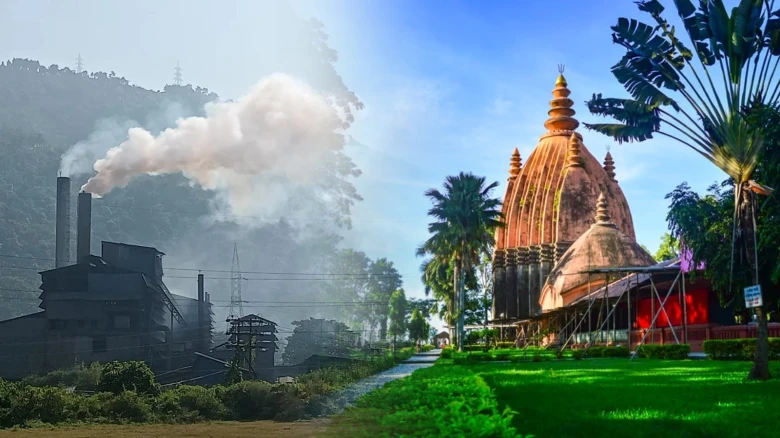CREA recently unveiled a concerning reality regarding the air quality in Northeast Indian cities...
Digital Desk: The Centre for Research on Energy and Clean Air (CREA) recently unveiled a concerning reality regarding the air quality in Northeast Indian cities through its February 2024 air quality snapshot. The findings painted a grim picture, indicating severe pollution levels, especially in Byrnihat, a city straddling the Meghalaya and Assam border.
Byrnihat emerged as the most polluted city in India, staggering with a monthly average PM2.5 concentration of 183 µg/m3. This figure surpassed the second most polluted city, Araria in Bihar, by approximately 60 µg/m3. Shockingly, Byrnihat's PM2.5 levels were nearly 1.8 times higher than those recorded in Delhi during the same period. Other Northeastern cities including Nalbari, Agartala, Guwahati, and Nagaon also found their place among the 30 most polluted cities.
Out of the 11 cities equipped with Continuous Ambient Air Quality Monitoring Stations (CAAQMS) in northeastern states, six surpassed the daily National Ambient Air Quality Standard (NAAQS) set by the Central Pollution Control Board (CPCB).
Amidst this gloom, there were rays of hope. Sivasagar, Silchar, Aizawl, and Imphal emerged as the cleanest cities in the region. Sivasagar even claimed the second cleanest city spot in India, followed by Silchar ranking 23rd. However, none of these cities met the WHO-safe guideline concentrations for PM2.5.
Sunil Dahiya, a South Asia Analyst at CREA, emphasized the urgent need for enhanced air quality monitoring and aggressive measures to combat pollution emissions in northeastern states. Dahiya pointed out that once celebrated for their pristine environment, these states are now grappling with escalating pollution levels due to unregulated industrial operations, insufficient public transportation infrastructure, and unchecked construction activities lacking pollution control measures, among other factors.
The burgeoning pollution crisis poses grave threats to public health and the region's economy. Dahiya stressed the criticality of implementing stringent measures to mitigate pollution emissions at their roots, safeguarding both public health and the economic stability of the region. As Northeast India battles this environmental menace, concerted efforts are imperative to restore its air quality and preserve its well-being for generations to come.

Leave A Comment